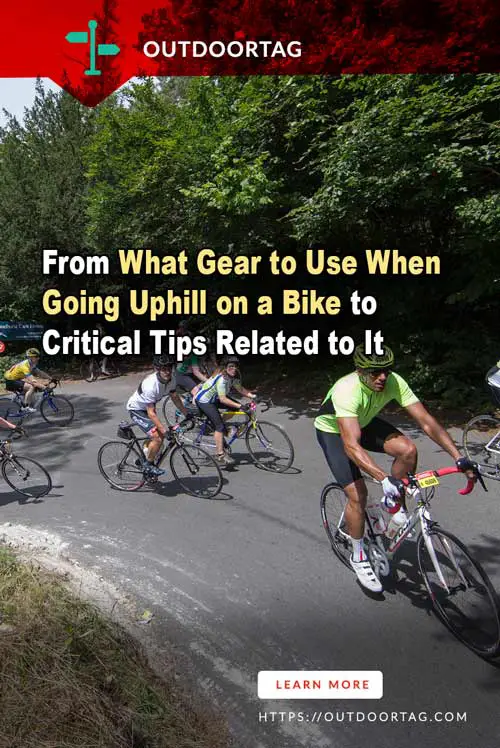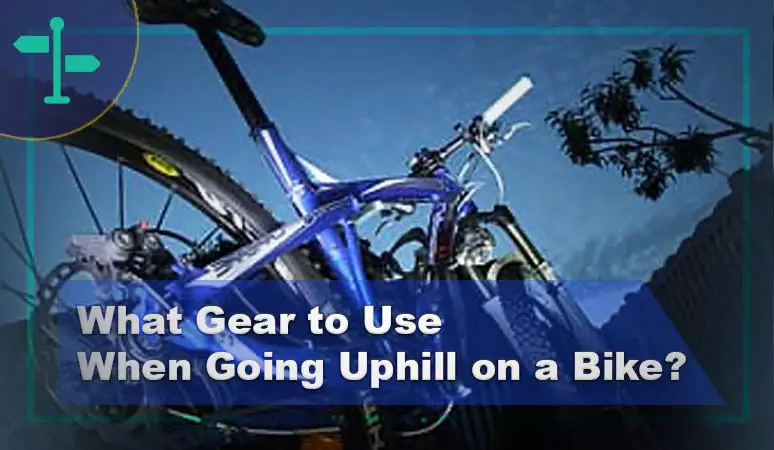There’s no surprise to the fact that climbing a hill by bike is tough. And it becomes even difficult when you carry pretty much weight. This includes your own body weight, the mass of bike as well as luggage weight. And then again, the thing is significantly easier for those who are fitter and carry less weight. It’s not a very big problem once you know what gear to use when going uphill on a bike. Let’s talk about the whole matter in detail today…
From What Gear to Use When Going Uphill on a Bike to Critical Tips Related to It:
The matter of how to shift gears on a bike for dummies could be the first thing to start with. If you know some basic ideas of gear shifting, this question won’t be bothering you much. Let’s talk about some critical points on gear identifying, tricks to pick the right one, and what gear works best for uphill situations.

Recognizing Your Bike Gears
There are so many types of bikes and that’s why the gear range can heavily vary. The size of the chainring usually determines gear size. Other factors that contribute to gear size determination are rear-wheel sprocket size as well as rear wheel’s diameter. These are called gear development or inches shortly.
To find out gear inches you need the number of teeth in both chainrings as well as a sprocket. Then multiply these figures with wheel’s diameter converted in inches. For finding out gear development, simply multiply the result by pi. Then you need to use conversion for turning imperial to metric. Gear inches are more widely used so let’s stick with that.
Selecting the Right Bike Gears for Hills
Often, we get confused by bike experts throwing random points that basically suits them after being involved with biking for quite a while now. That however may not be true for you. For example, some believe that a sprocket bigger than 25 teeth is useless. While a few say triple chain set is not very necessary. But these can be absolutely not true for those who are new to this business. And that’s why let’s focus on your beginner’s day to pay attention to a few notes for selecting the right bike gear. Those are given below:
If you live in a very flat area such as London or are quite fit for riding, any commuter bike should work best with lower than 40 inches bottom gear. However, this rule does not belong to a few road bikes as well as 3 or less than geared bikes.
In hillier areas, those who have a sportier commuter bike can work with a bottom gear of 30 inches. You can also depend on a road bike that comes with a 30-tooth bottom sprocket and a 34-tooth inner chainring.
Bottom gear around 20 inches will suit best for people with heavier weight. Those who are not very fit will benefit most out of it. This also works for steeper hill riding or load hauling situations. Hybrids, mountain and touring bikes works best here. Go for 28 or fewer teeth small chainring as well as big sprocket that comes with 32 or more teeth.
Factor-Based Tips on Utilizing Bike Gears for Uphill Riding
After furnishing some basic gear ideas it’ll be only right for me to talk about some uphill riding tips that work for a certain situation. Sometimes these are a total savior and as a novice, you must know about them.
The approaching hill should catch your eye when there’s still plenty of time to hit it. So, make sure you are keeping an eye on the road ahead to have enough time visualizing hill. As you keep moving towards the hill, drop a few gears down. Here keeping your cadence increasing while still applying some power on pedals are necessary. You also need to work on generating forward momentum. Once the climb starts, you will also experience fewer gear drops this way.
When dropping down a gear, you need to do that one at a time. Because with several dropping at one time you can face some chain drop issues. Suppose you are approaching a long and steep hill. And your chainring set up is double or triple. In that case, you should go for a smaller chainring by using the left gear lever.
These are front gears and helps to use much lower and easier gear quickly. Use the rear gears to fine-tune next. You can shift down a few gears if the hill is not very long or steep. In this case, go for the right gear lever at back.
If the hill is not very short and sharp, it’s best to stay steady with an easy gear riding. That way you will not spend too much energy and there will be enough forward momentum generated. Another tip is about a situation where the gears are not changing. Sometimes due to fault in derailleurs, such a problem arises. Along with the contour of the hill, try to ride sideways. This way you will allow tension relieving and as a result, the gear will soon start shifting again.
Also, remember that the concept of right gear is actually a myth. With more rides and experience, you will find for yourself about which gear works best. There are more than a few factors such as length of climb and steepness of hill that play a critical part in deciding the right gear for you.
Watch This!
Wrap Up
Now you know more than just what gear to use when going uphill on a bike. Hopefully, your climbs will not feel like a big burden anymore. And so, those morning hill rides with your commute bike will be safe and stable. However, you still need to be aware of a lot of other things, so don’t stop here and research a bit more. As you can already tell, a biker’s one of the most challenging rides is on hills. Especially if it’s a beginner we are talking about.

